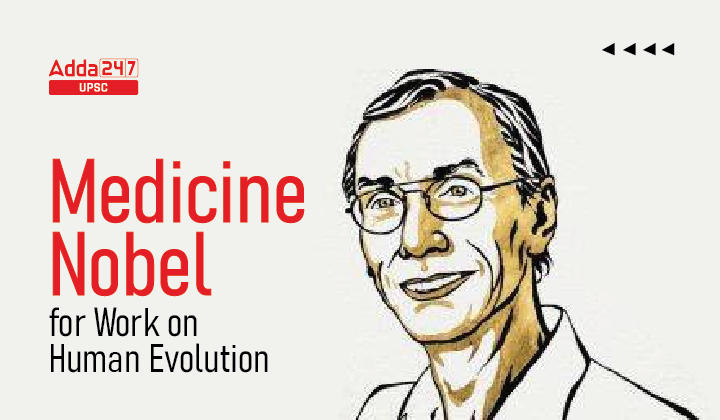Table of Contents
Medicine Nobel for Work on Human Evolution: Relevance for UPSC Exam
General Studies III- Science and Technology
In News
Swedish scientist Svante Paabo won the Nobel Prize in medicine for his discoveries on human evolution that provided key insights into our immune system and what makes us unique compared with our extinct ancestors.
Svante Paabo: His work, explained
- Svante Paabo’s seminal discoveries provide the basis for exploring what makes us uniquely human.
- Hominins refer to the now-extinct species of apes that are believed to be related to modern humans, as well as modern humans themselves.
- Paabo found that gene transfer had occurred from these now extinct Hominins to Homo sapiens following the migration out of Africa around 70,000 years ago.
- This ancient flow of genes to present-day humans has physiological relevance today, for example affecting how our immune system reacts to infections.
- Paabo established an entirely new scientific discipline, called paleogenomics that focuses on studying the DNA and genetic information of extinct hominins through reconstruction.
What is the relation between evolution and biology?
- Paabo’s discoveries have established a unique resource, which is utilized extensively by the scientific community to better understand human evolution and migration.
- We now understand that archaic gene sequences from our extinct relatives influence the physiology of present-day humans.
How did Paabo establish the linkage?
- Paabo extracted DNA from bone specimens from extinct hominins, from Neanderthal remains in the Denisova caves of Germany.
- The bone contained exceptionally well-preserved DNA, which his team sequenced.
- It was found that this DNA sequence was unique when compared to all known sequences from Neanderthals and present-day humans.
- Comparisons with sequences from contemporary humans from different parts of the world showed that gene flow, or mixing of genetic information among a species, had also occurred between Denisova and Homo sapiens – the species of modern-day humans.
- This relationship was first seen in populations in Melanesia (near Australia) and other parts of South East Asia, where individuals carry up to 6% Denisova DNA.
- The Denisovan version of the gene EPAS1 confers an advantage for survival at high altitudes and is common among present-day Tibetans.
What are the challenges in carrying out such research?
- There are extreme technical challenges because with time DNA becomes chemically modified and degrades into short fragments.
- The main issue is that only trace amounts of DNA are left after thousands of years, and exposure to the natural environment leads to contamination with DNA.
- Neanderthals were humans like us, but they were a distinct species called Homo Neanderthalensis.
- Together with an Asian people known as Denisovans, Neanderthals are our closest ancient human relatives. Scientific evidence suggests our two species shared a common ancestor.
- Current evidence from both fossils and DNA suggests that Neanderthal and modern human lineages separated at least 500,000 years ago. Some genetic calibrations place their divergence at about 650,000 years ago.
- The best-known Neanderthals lived between about 130,000 and 40,000 years ago, after which all physical evidence of them vanishes.
- They evolved in Europe and Asia while modern humans – our species, Homo sapiens – were evolving in Africa.




 TSPSC Group 1 Question Paper 2024, Downl...
TSPSC Group 1 Question Paper 2024, Downl...
 TSPSC Group 1 Answer key 2024 Out, Downl...
TSPSC Group 1 Answer key 2024 Out, Downl...
 UPSC Prelims 2024 Question Paper, Downlo...
UPSC Prelims 2024 Question Paper, Downlo...




